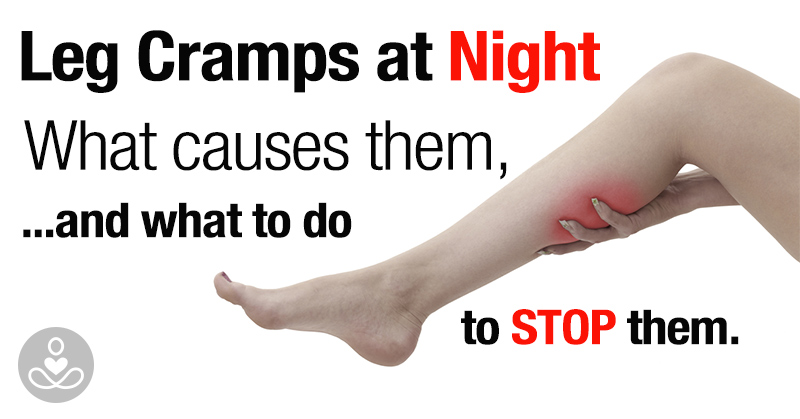Understanding and Alleviating Leg Cramps: A Comprehensive Guide
Leg cramps are a common affliction that many individuals endure, particularly during the night. These involuntary muscle contractions can be incredibly painful, leading to significant discomfort and sleep disruption. While many people experience occasional leg cramps, others may suffer from them chronically, often leading to a cycle of restlessness and anxiety regarding sleep. Understanding the underlying causes of leg cramps is vital for effective management and relief. In this article, we will delve into potential reasons for leg cramps, including nutritional deficiencies, lifestyle factors, and holistic practices that can provide respite from this troublesome condition.
Common Causes of Leg Cramps
Leg cramps can arise from numerous factors, and recognizing these can help individuals take proactive steps to mitigate their occurrence. One of the most frequently cited causes of leg cramps is dehydration. Insufficient fluid intake can lead to an imbalance of electrolytes, which are crucial for muscle function. When the body does not receive enough fluids, it can trigger involuntary contractions, resulting in cramping sensations. This can be particularly prevalent during hot weather or after intense physical activity, when the body loses significant amounts of water and electrolytes through sweating.
Another significant factor is nutrient deficiencies, particularly in minerals like magnesium and potassium. Magnesium plays an essential role in muscle relaxation; thus, a deficiency can contribute to increased muscle tension and subsequent cramping. Foods rich in magnesium, such as leafy greens, nuts, seeds, and whole grains, can be beneficial. Furthermore, potassium is critical for proper muscle function, and its deficiency often occurs when individuals consume a diet low in fruits and vegetables, particularly bananas and avocados. Notably, the elderly and individuals with certain medical conditions may be at a heightened risk for these deficiencies.
The Role of Vitamin D and Calcium
Vitamin D deficiency is another possible culprit for those experiencing leg cramps. This vitamin is crucial for the absorption of calcium, which is fundamental for muscle contraction and relaxation. When vitamin D levels are inadequate, calcium absorption is compromised, leading to muscle issues, including cramps. Natural sunlight exposure is an effective way to boost vitamin D levels, but during overcast months or in areas with limited sunlight, dietary sources such as fatty fish, egg yolks, and fortified products can serve as reliable alternatives. Additionally, those with severe deficiencies may consider supplements, but it is essential to consult with a healthcare professional before starting any regimen. It is important to note that too much calcium without adequate magnesium can also contribute to cramping, highlighting the delicate balance required for muscle health.Practical Solutions: Lifestyle and Dietary Adjustments
To combat leg cramps, it is essential to incorporate specific lifestyle and dietary adjustments. One effective method is the inclusion of stretching exercises into your daily routine. Stretching helps to promote blood flow to the muscles, reducing the likelihood of cramping. Simple calf stretches, where you lean against a wall with your heel on the ground and stretch your calf muscles, can be particularly beneficial. Other effective stretches include the standing quadriceps stretch and the seated hamstring stretch, both of which can help alleviate tension in the legs. Performing these stretches several times a day, especially before bed, can help alleviate tension and promote muscle flexibility, thereby reducing the chances of cramps.Moreover, maintaining adequate hydration is critical. Drinking sufficient water throughout the day, especially if you consume a high-fiber diet, can help prevent dehydration-related cramps. Aiming for at least two liters of water daily is recommended, but personal needs may vary based on activity levels and climate. Additionally, consider integrating electrolyte-rich foods into your diet, such as bananas for potassium and leafy greens for magnesium, to further enhance your nutritional balance. Sports drinks can also help replenish electrolytes, but it’s wise to choose options that are low in added sugars. Monitoring your fluid intake and adjusting based on physical activity and environmental conditions can play a crucial role in preventing cramps.
Holistic Approaches: Acupuncture and Massage Therapy
Beyond dietary changes and exercise, exploring holistic treatments like acupuncture and massage therapy can yield favorable results for those plagued by leg cramps. Acupuncture aims to improve blood circulation, and its benefits have been documented in various studies. By stimulating specific points on the body, acupuncture can enhance blood flow to the legs, which may help in mitigating nighttime cramps. Seeking the assistance of a qualified practitioner can provide personalized treatment options tailored to your unique needs. Some individuals have reported significant relief from cramps after just a few sessions, indicating the potential effectiveness of this alternative therapy.Similarly, massage therapy can stimulate blood flow and alleviate tension in the muscles. Through the application of pressure and manipulation of soft tissues, massage can assist in reducing the discomfort associated with leg cramps. Techniques such as deep tissue massage can specifically target tight areas, while gentle Swedish massage promotes overall relaxation. Paying special attention to areas that feel tight or tender can help identify trigger points, and spending extra time on these regions can enhance muscle relaxation and relieve cramping sensations. Additionally, self-massage techniques, such as using a foam roller, can be effective for at-home relief.
Stress Management and Relaxation Techniques
Finally, addressing the emotional and psychological aspects of health can be crucial in preventing leg cramps. High-stress levels can lead to muscle tension and, ultimately, cramps. Engaging in relaxation techniques such as deep breathing, mindfulness, or gentle yoga can help lower stress levels. For instance, practicing deep breathing exercises for just a few minutes each day can enhance oxygen flow to the muscles, promoting relaxation. Taking a few moments at the end of each day to reflect on positive experiences or express gratitude can foster a sense of calm, putting the body into a state more conducive to relaxation and recovery. Incorporating regular physical activity into your routine, even something as simple as a daily walk, can also help to manage stress and prevent cramps.In conclusion, while leg cramps can be an annoying and painful experience, understanding their causes and implementing practical solutions can significantly reduce their frequency and severity. Whether through dietary adjustments, stretching exercises, holistic therapies, or stress management techniques, individuals have a range of options available to them. By taking proactive steps, you can pave the way for a more restful and cramp-free night’s sleep. If cramps persist despite these interventions, it may be advisable to consult with a healthcare provider for further evaluation and management, as underlying health issues could be contributing to the problem.

















